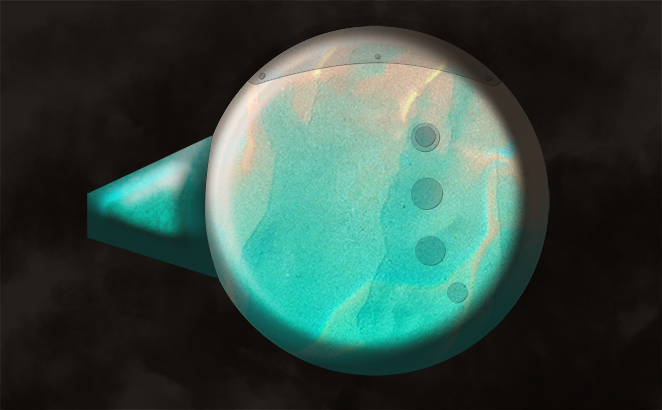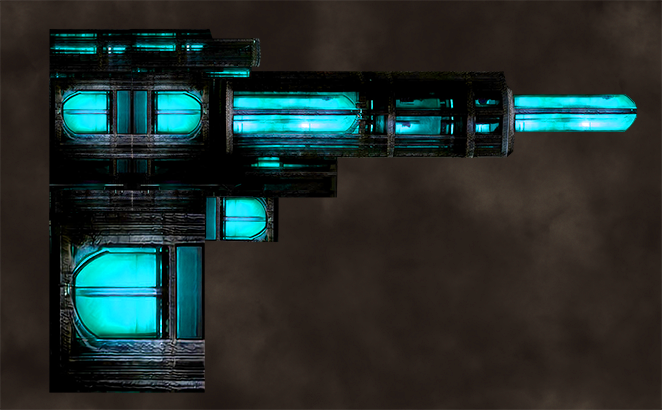Aquatheerdaal: History
Aquatheerdaal is a cyan-hued mineral used as an energy source in advanced tech, especially in weaponry.
It plays an integral part in weapons tech through the last five thousand years on the two continents of Siinder, Pelthine and Theyndora.
For a general description of the mineral, see Aquatheerdaal
For a general description of the mineral, see Aquatheerdaal
Map of aquatheerdaal-related continents circa 651 DE.
Dates:
On Theyndora, TE is for Tangis Empire, but covers all dates before 1 DE and counts backwards. DE refers to Dentherion Empire, and is used to denote dates 1 DE and on, counting forward. The current year in LoN is 651 DE.
On Theyndora, TE is for Tangis Empire, but covers all dates before 1 DE and counts backwards. DE refers to Dentherion Empire, and is used to denote dates 1 DE and on, counting forward. The current year in LoN is 651 DE.
All artwork by Shanda Nelson unless otherwise stated
Early History
Starting around 6000 TE, many seagoing cultures from the Siinder continents, Theyndora and Pelthine held aquatheerdaal in high regard. Its cyan hue represented calm sea waters, and shamans, witches, priests and other spiritual leaders claimed that leaving chunks of it on altars allowed them to commune with their water deities. Adherents conducted the first scientific studies on the mineral, attempting to find the exact method that their gods used to commune with the religious. They did not stumble upon a communication link, however, but rather its explosive nature. Fearing that their deities expressed their displeasure over the curiosity, religions forbid the study of it--and did so especially quickly when places of worship suffered damage after experiments went wrong. So research into its properties went underground for the next two thousand years. The curious considered their knowledge arcane, and rarely passed anything of import on to anyone but their chosen apprentices. The religious hunted these experimenters, leading to many false accusations and innocent deaths. Until Lil the Tiller arrived on the experimenter scene ~3888 TE.
Lil the Tiller
Lil was a mediocre Siindlenorth farmer who desperately wanted to leave the fields, her husband, and her children behind. She saw life in rural Geven as a punishment, and the drag of family more so. The priests of her village chastized her sacrilegious thoughts.
Feeling desperate, she decided to leave her hopeless life and throw herself into the wilderness. The morning of her departure, she stumbled across the fields before dawn, tired, depressed, and dragging. The storm the night before had kept her up, and she wondered at the ill sign.
Her shuffling feet uncovered a cyan-hued rock. She recognized it as one that the priests declared sacred, and hastily cleared the dirt. She weighed the fist-sized rock in her hand and looked around. She noted more bits of cyan peeking up through the soil.
With firm determination, she grabbed a spade. It did not take long to unearth enough to fill her pack. She left a couple near the discarded spade so her husband could not help but see the mineral, and left.
She knew, from the decrees of the priests, the general area that experimenters lived, hiding in the forest and away from a nasty, religious-inspired death. After a four-day search, she finally found the community. The suspicious gatekeeper immediately let her inside when she proffered the aquatheerdaal. Eager to continue interrupted experiments due to lack of materials, the community gratefully accepted her gift, and she joined them in their scientific efforts.
Lil brought creativity to a stagnant research center. Inspired by a willingness to try anything, no matter how silly, she discovered that the heated explosiveness of the aquatheerdaal could be harnessed by grinding the mineral into a fine powder and pouring a half-spoon amount into a thrice-heated glass coated with a shiny metal called sliss. Sliss containers did not break when she added a special chemical mix she called Lil's Water and the interaction caused an explosion. The heat produced took days to dwindle.
Unlike previous experiments, her community shared her discovery with other inquiring people. Domestic uses cropped up where people who were wealthy enough to purchase the aquatheerdaal resided. Servants and housewives used small containers to heat bath and laundry water, keep feet warm in winter and food heated without burning it. Larger containers filled fireplaces and made homes nice and toasty. During freezes, farmers placed them under trees draped in tents to keep the plants from dying. A race to produce a container with a hotter and longer heat cycle began.
photo Dimitris Vetsikas from Pixabay
Lil the Tiller as the Geven goddess of fruits, Bahmis
Dakendorth, Meergevenis
Lil the Tiller as the Geven goddess of fruits, Bahmis
Dakendorth, Meergevenis
Aquatheerdaal was never easy to come by, and while Lil's discovery of it in her fields is apocryphal, farmers were the main source of the mineral. They unearthed it while they tilled their fields.
Richer farmers first attempted to cultivate trees during this time. After the first few winters, they realized fruit trees disliked low temperatures. They viewed Lil as the savior of their crops and livelihood and elevated her to a god-like status. Religious leaders despised the respect because a woman who abandoned her god-given duty to family did not deserve the awe.
The Sphere
Qavent Historical Museum, Geent, Taangis
Awkward and with the propensity to accidentally trigger, few enjoyed using this monstrosity. Scholars, curious as to why Yush the Elder did not create a more easily held weapon, have no answers other than stubbornness on his liege's part.
Qavent Historical Museum, Geent, Taangis
In modern times, the bulbous, handheld weapon has been a favorite of underground trade in tech. It looks odd and menacing enough that commoners fear those brandishing it, and capitulate to their whims. The underground relies on this deep-seated terror of tech because, in reality, the weapons rarely work as intended.
Pelthine
Aquatheerdaal did not have the same reputation in Pelthine as in Siindernorth. While used in religious observances, it was not considered the sole communication medium to important gods, but more a representation of the ocean of knowledge and goodness they sanctified. Outcasts from Siindernorth made their way by boat to the eastern continent, looking for a place to conduct experimentation without death looming over their shoulder.
In 3464 TE, alchemists under the direction of His High Lordship of Qaanderein discovered another use for the sliss container and aquatheerdaal. They created a bowl-sized sphere with a thin sliss coat on the outside. Within sat the mineral in a cup and a small, easily broken glass container filled with mintzer acid and a mixture of other chemicals hovering above it. Once lobbed from a catapult, the jostling broke the glass and poured the mixture onto the powdered mineral. The resulting explosion would break the glass, which corrupted the sliss coating just as the object reached its target. Qaanderein used the sphere to knock down city walls, destroy enemy defenses and rip through unprotected troops. His High Lordship easily conquered neighbors with the new technology, and his alchemists continued to work on creating long-ranged weapons based around aquatheerdaal.
Not until five hundred years later, under the guidance of Yush the Elder and pressured by insurrection, did alchemists in the Qaanderein Empire (3424-2855 TE) realize a hand-held weapon using the mineral. Yush and his team discovered another metal, referred to as lucid silver, that worked far better than sliss in containing aquatheerdaal's explosive reaction. They created an internal mechanism that only dripped a small amount of a chemical solution onto the mineral, and formed a pipe that directed the explosion out of the sphere. Enterprising Yush added a trigger that would drop a tiny stone ball into the burst of energy, sending it as great speed out of the pipe's mouth.
The ball was a deadly missile--when the person wielding the sphere was lucky enough to strike someone with it. Holding it at waist height, and with no sight, made it difficult to aim. Other factors such as the unsteadiness of the person holding the weapon, the wind, and obstacles like tree branches, made the invention impractical for war use.
Without a new, threatening weapon, Qaanderein lost its empire and its people went back to warming feet with aquatheerdaal in sliss containers.
A New Era
Meergevenis
Aquatheerdaal dwindled in usage as the supplies became rare. Religions still used it in ceremonies, but governments ignored it until Meergevenis rose to power.
Meergevenis, the son of a powerful Julve aristocrat, decided he wanted more than to inherit a profitable duchy. He drew dissatisfied mercenaries and soldiers to his cause, then invaded the Julve capital in 1487 TE.
His men used a new technology; their weapons emitted a heated aquatheerdaal beam that seared flesh, lit combustible things on fire, and caused general mayhem.
Historians argue where Meergevenis gained these new, more advanced weapons because they seem to have risen out of nowhere. Some suggest that the ages-old enclaves that studied the mineral for religious reasons gave him a prototype that his scientists refined into a weapon. Unfortunately, he took that secret to his grave.
Before Meergevenis, aquatheerdaal was accidentally discovered by farmers or people out walking in the woods, because finding veins was so difficult. He started the first mines on Siindernorth, and used terron lizards to sniff out appropriate locations to dig.
Until that point, the lizards were seen as odd pets, and their communities left to themselves. Raids began, where governments and the underground alike kidnapped the young before they could develop appropriate defenses, and forced them to sniff for the mineral. It stoked fear of humans in the terron communities, and they attempted various actions to keep their children safe.
Early Modded Tech Weapon
Qavent Historical Museum, Geent, Taangis
Taangis modified the boomerang-shaped tech into straighter lines. Soldiers liked how the boomerang felt as they handled it, and disliked the functional, ugly tech that rose from it.
In modern times, a boomerang-shaped weapon is a sign of illicit tech, and almost exclusively used by the underground.
Qavent Historical Museum, Geent, Taangis
Taangis
Mayra triggered an arms race between countries on the Siinder continents. The rulers of Taangis took note, and in 1137 TE, High Lordship Orlessa arranged for Meergevenis to provide her army with arms.
Taangis easily ran across Pelthine, and greedily lapped up land. By the time of Orlessa's death in 1086, the country had conquered nearly every other land on the continent. Her successor, her only child Nivex, swallowed what was left of the free countries and turned his attention to Theyndora.
Taangis plowed through defenses on the eastern seaboard, though they had more difficulty with guerilla fighters in the interior. Importing better aquatheerdaal Meergevenis tech, Taangis finally succeeded in overcoming the final resistance in 997 TE.
Before Taangis, peoples of Pelthine and Theyndora were farming communities and while they had access to explosive catapult tech, most hand-to-hand combat took place using bladed weapons.
After Taangis fell, so, too, did access to aquatheerdaal tech. Societies employed other means of power, like wind and water, and vehicles that did not run on the mineral, but were powered by electricity.
Dentheria
The Taangis Empire kept power through aquatheerdaal-based tech during the next millennia, but The War of Silence sparked its dwindling influence. Taangis left Theyndora in 1 TE. Just over three hundred years later, the Lord's Council of Dentheria, interested in promoting their strength, brokered relations with a revitalized Taangis. In 315 DE they received aquatheerdaal-based weapons, vehicles, communication devices and flying craft, and began their own conquering by invading neighboring Shaloar in 330.
Unlike previous empires, Dentheria decided denying tech to their vassal states would keep them in power. Outside of Dentheria itself, only puppet rulers and their supporters could own limited supplies of it. In Dentheria, sweeping aquatheerdaal upgrades, from farm equipment to transportation to communications, benefited all sectors of the economy and average citizens became rich and content, with little care outside their own comfort.
Rebellions, syndicates and the like decided their only way to combat Dentheria rested in obtaining aquatheerdaal tech. Underground trade in the mineral-based devices rose fast and remained brisk. Cheap knockoffs infiltrated the illicit sales, which were poorly manufactured and easily broken. Purchasing legitimate tech cost so much only the most wealthy underground institutions could afford it, so syndicates grabbed supplies for themselves while smaller rings struggled to remain solvent.
Taangis saw Dentherion's success and wanted to muscle in on the action. Looking for a new source of tech, High Councelor Wislen finalized direct trade agreements with the Republic of Alleurs, a Siindernorth country whose conflict with Meergevenis had inspired many a tech innovation. Among the imports were better aquatheerdaal weapons, the scientists who knew how they worked, and a trickle of non-aquatheerdaal farming and industrial tech.
A closely guarded state secret, the reason Dentheria denied tech to the vassal states was due to the limited aquatheerdaal resources. Mines throughout Pellthine, Theyndora and the Siinder continents were showing signs of depleting. The better-equipped Meergevenis, along with other Siinder continents and Taangis, were hoarding a lot of the mineral, and Dentheria did not have access to what they needed to produce and repair weapons and other aquatheerdaal-based tech.











Comments